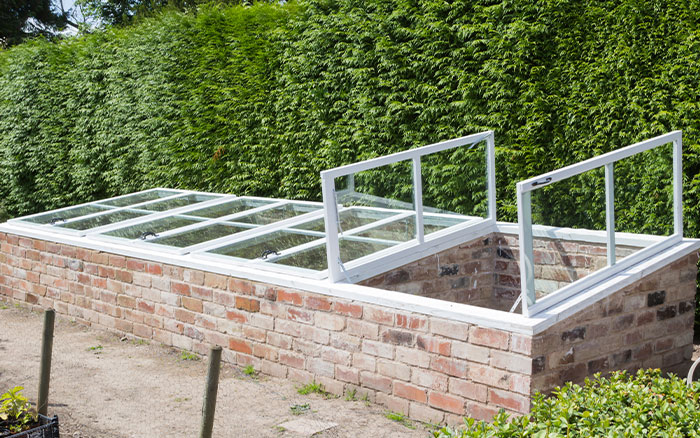We’re approaching high summer. It’s a wonderful time of the year when everything in the garden is bursting out in fresh flushes of growth. Also, early fruit and vegetables are starting to ripen.
Make sure you keep your supply of autumn cropping vegetables. Now is the perfect time to plant out and/or succession sow the next batch of veg plants and/or seeds to enjoty later in the year.
Young Plants
You’ll need to harden them off first, otherwise the sudden temperature change will arrest their growth and development. And, in some cases, the delicate leaves can be damaged.
Hardening off is a very simple process. Just place the plants outside in a sheltered spot, out of direct sunlight, during the day for around seven days. Then, bring them all in overnight until you’re ready to plant them outside.
Make sure all the plants are watered in well and regularly to help them establish quickly.
It’s easier to provide support for the climbing veg before planting. In the case of beans, this should be like a wigwam of hazel or bamboo canes tied together with string or twine.
If you’re growing celery and/or celeriac, the soil they’re planted in needs to be rich in nutrients. This will help them to grow well, so dig in plenty of compost before planting out. Both crops also need plenty of water to grow well.
Seeds
It’s not too late to sow seeds of tender annuals and half-hardy perennial veg such as French and runner beans. You can also succession sow fortnightly, seeds of peas, lettuce and mange tout.
Gap filling
If you’ve grown first early potatoes, these will be ready to harvest this month. Fill the gaps left by them with young leek plants. Plant out leeks by making holes in the ground with a dibber, dropping the leek plant in the hole, then watering. This will cause the soil to fall in all around the plant without you having to do anything!
For leeks with long white stems, you’ll need to plant them deeply. Then, pile soil up around them as they grow, as excluding light is what causes the stems to blanch white.
If you plant late autumn or winter maturing veg like purple sprouting broccoli and other brassicas, leave space between each plant. Use these gaps to grow faster cropping veg earlier in the year, such as lettuce or radish, for a fuller harvest. This will guarantee you more autumn cropping vegetables, consistently.

For more great gardening advice, make sure you head to my YouTube Channel. Make sure you’re subscribed with notifications on so you don’t miss any of my new videos.
Frequently Asked Questions
1 – When is the best time to plant out autumn cropping vegetables in June?
Plant out once the frost risk has passed. This is usually by mid-June. Harden plants off first to avoid shock and get them growing strong.
2 – What is hardening off and why is it important for veg plants?
Hardening off helps indoor-grown plants adjust to outdoor life. Position them outside in a sheltered spot by day for a week, then plant out.
3 – What vegetables can I sow from seed in June?
Sow French beans, runner beans, lettuce and peas in June. Succession sowing every few weeks keeps the veg patch productive all summer.
4 – What can I plant after harvesting early potatoes?
After lifting early potatoes, plant leeks. Just drop them in a hole and water. For longer white stems, plant deep and earth them up. This will keep your beds productive for longer, and more autumn cropping vegetables.
5 – How do I grow quick crops between slower brassicas?
Sow fast-growing veg like radish or lettuce between autumn brassicas. You’ll harvest these quick crops before the brassicas fill out.


Leave A Comment